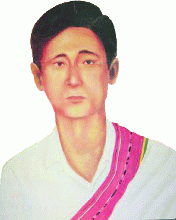Nagaland: The Holy Kingdom
In 1919, the British left most of India in the hands of local princes and revolutionaries. One of these revolutionaries was a young man named Haipou Jadonang [1].
Jadonang was from the Rongmei tribe of the Naga people, a tribe inhabiting the furthest reaches of the Indian subcontinent and parts of Burma. As a young farmer, he began to gain interest in religion, specifically the ancestral religion of the Nagas, becoming a soothsayer among his people. He also began to notice the rise of Christian and Hindu missionary movements, which he deemed foreign imperialism.
In 1917, the Kuki people, the Nagas’ historical rivals, successfully rose up against the British for a short one before their dismissal by the signators of the Delhi Conference in 1919, and their absorption into Manipur. In both this revolt and the Weltkrieg, Naga forces contributed greatly to the British war effort, and, after Britain’s surrender after George V’s assassination in 1919, formed the Naga Club to demand the emancipation of their people. Jadonang was influenced by the Naga club, and, a few years later [2], would form the Heraka movement[3], inspired by local traditions.
The Heraka religion combined both local beliefs and Abrahamic beliefs in a supreme power, known to Jadonang as Tingkao Ragwang, and placed little emphasis on superstition.
Other than religion, Jadonang was also focused on nationalism. He envisioned a large Naga state, known as the Makam Gwangdi, consisting of all Naga-speaking lands. He was to be its king.
With the British gone, Jadonang was practically the leader of Nagaland, and, by 1927, had established a large state, which was, while with little recognition, rather powerful.
The future, however, seems uncertain for Nagaland. Without much foreign support, it cannot grow, especially since it is practically isolated from the rest of India. With the Chinese civil war coming to a close, one wonders if Germany will look to Nagaland next.
[1]- Jadonang was a real person, and his ambitions too were real. Although in OTL he was hanged in 1931, with no British I figured he might have a better chance.
[2]- Again, a real club.
[3]- The Heraka (pure) movement used to be rather dominant in Nagaland, though it has since reduced in size due to the rise of Christianity in the region. It is not looked upon very kindly in Nagaland, due to the fact that many Hindu nationalists idolise it.

